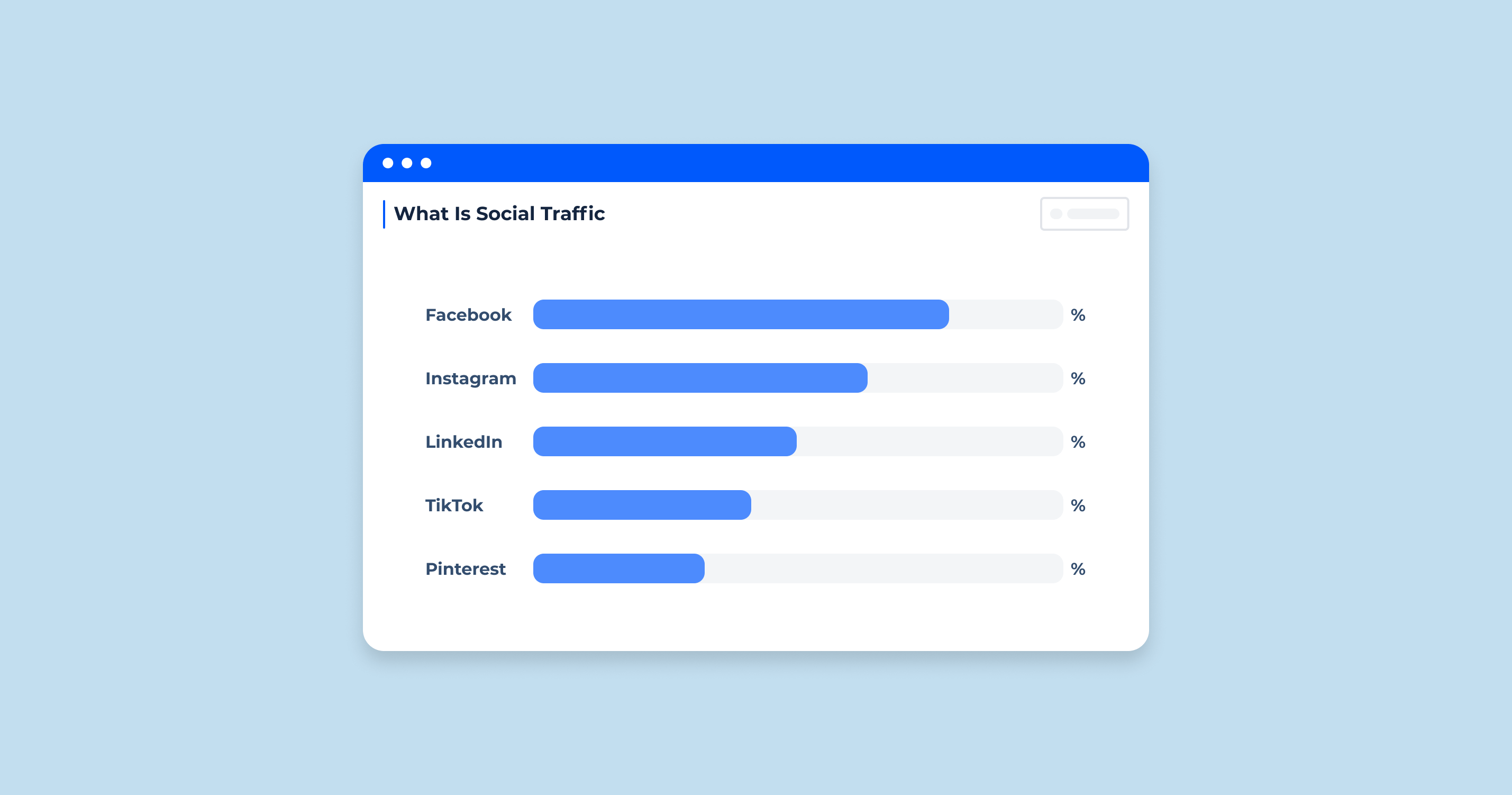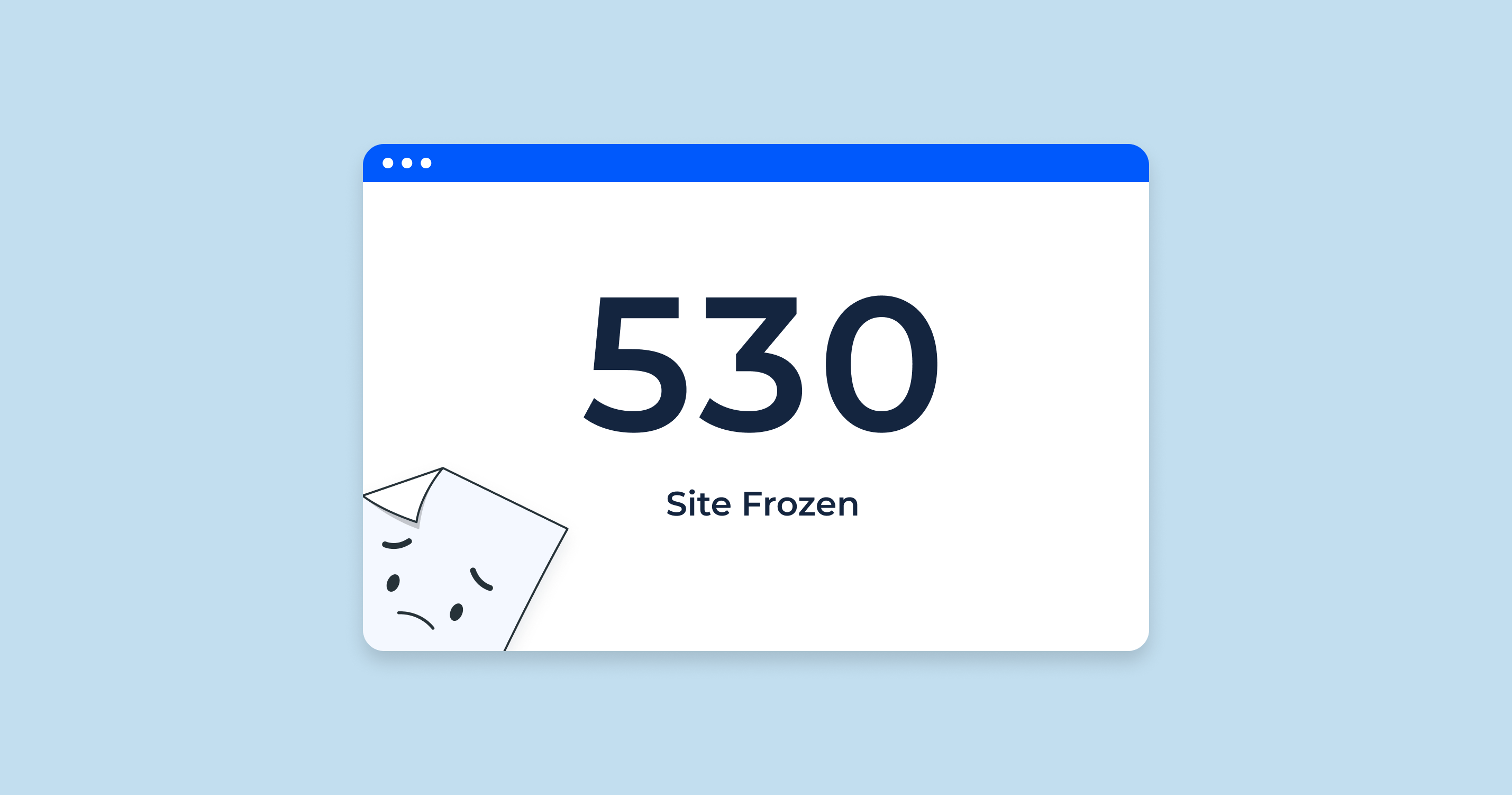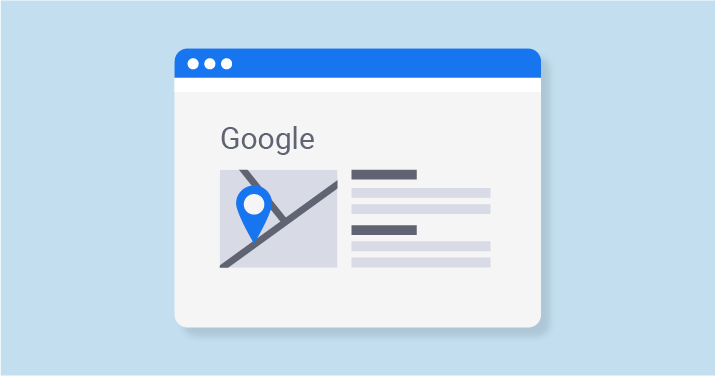“Social traffic” refers to the web traffic or visitors that come to a website, app, or other digital platform directly from social media channels. This can include platforms like Facebook, Twitter, Instagram, LinkedIn, Pinterest, Reddit, TikTok, and any other channels.
When a user clicks on a link in a post, a tweet, a bio, or perhaps even a direct message and is then taken to another site, they’re considered social traffic for that site. As it is highly valued because it is usually a targeted audience that is more likely to engage with the content, product, or service being offered.
In digital analytics (such as in Google Analytics), social traffic is often reported as a separate category, allowing site owners to understand the quantity and behavior of users coming through social media channels.
Businesses often track the traffic they receive from social media marketing campaigns to measure their effectiveness. This can help them understand which platforms are most effective for their specific goals, whether that’s increasing brand awareness, selling products, or driving readership, among other things.
Calculating Social Traffic
Evaluating social visitors entails the process of monitoring and quantifying the number of visitors that arrive at your website via social media platforms. Here’s a straightforward guide on how to accomplish this using Google Analytics, a widely-utilized tool for website analytics:
1. Google Analytics Login
Begin by setting up Google Analytics for your website. If you haven’t done so already, create an account and integrate the tracking code into your website.
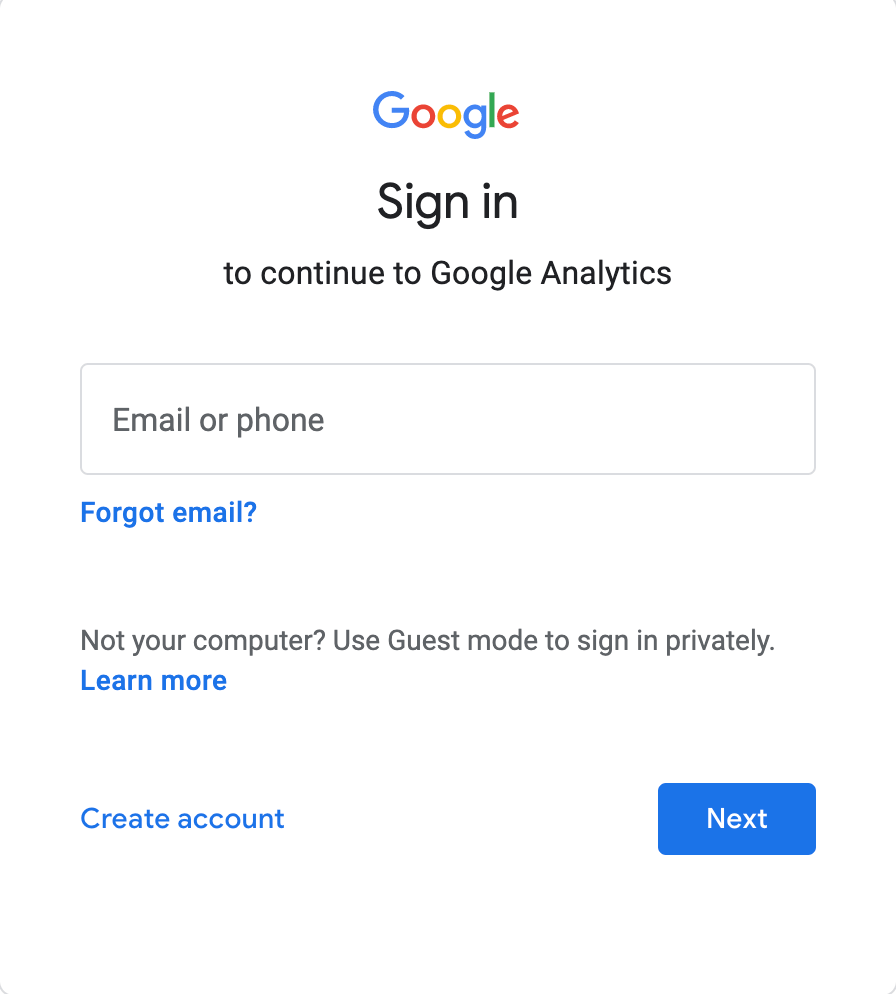
2. Navigate to the ‘Acquisition’ Section
Once logged into Google Analytics, locate the ‘Acquisition’ section within the left-hand sidebar.
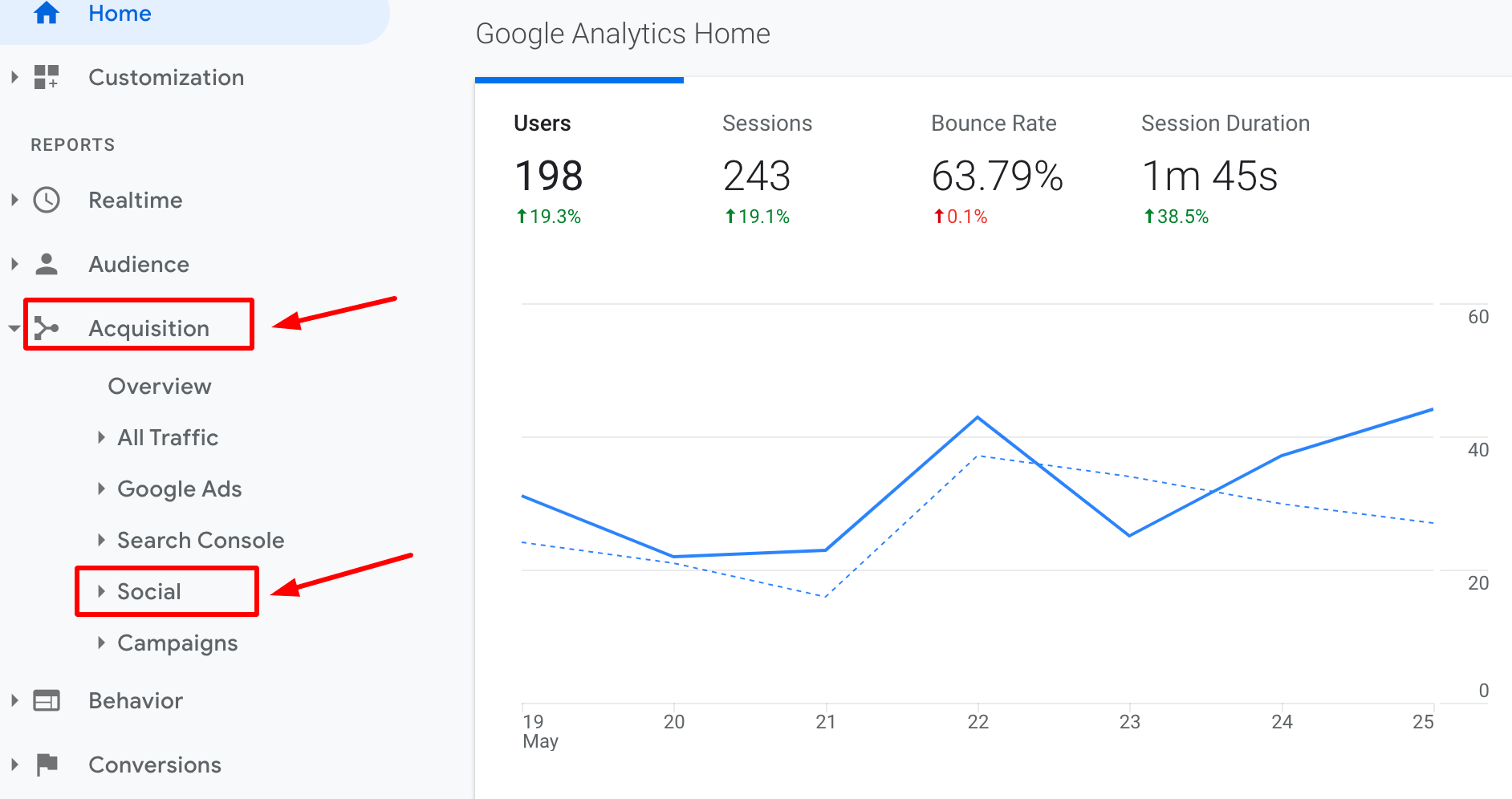
3. Select ‘Social’
Within ‘Acquisition’, you’ll find a ‘Social’ option. Click on this.
4. Click on ‘Network Referrals’
Under ‘Social’, select ‘Network Referrals’.
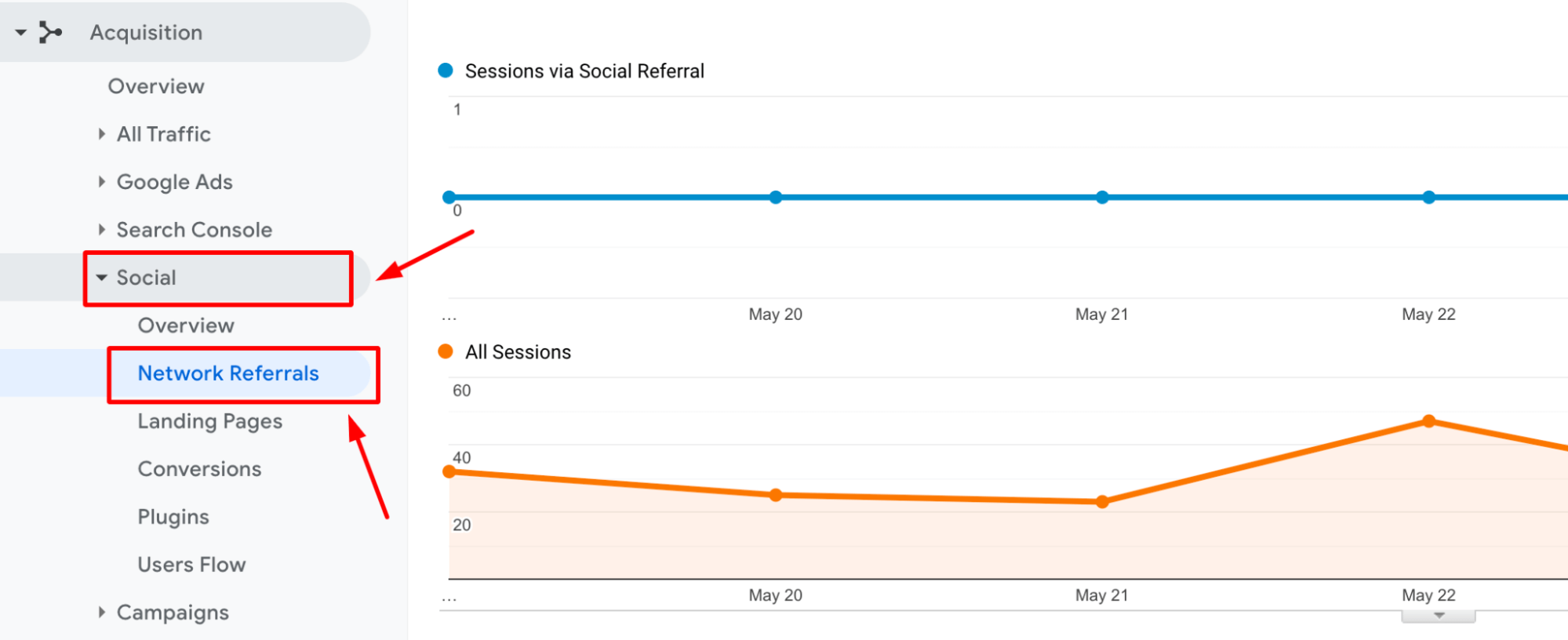
You’re now presented with a report displaying all the social media platforms that have directed traffic to your website during a specified period. This includes the number of sessions per platform, the average number of pages visited per session, the average session duration, and the bounce rate.
In addition, if you’ve established Goals or Ecommerce tracking in your Analytics, you can also examine conversions derived from this type of traffic.
To do this:
- Head to ‘Conversions’: This option is also located under ‘Social’. Select it.
- Choose ‘Overview’ or ‘Goals’: Here, you’ll be able to view the number and proportion of conversions attributed to social media traffic.
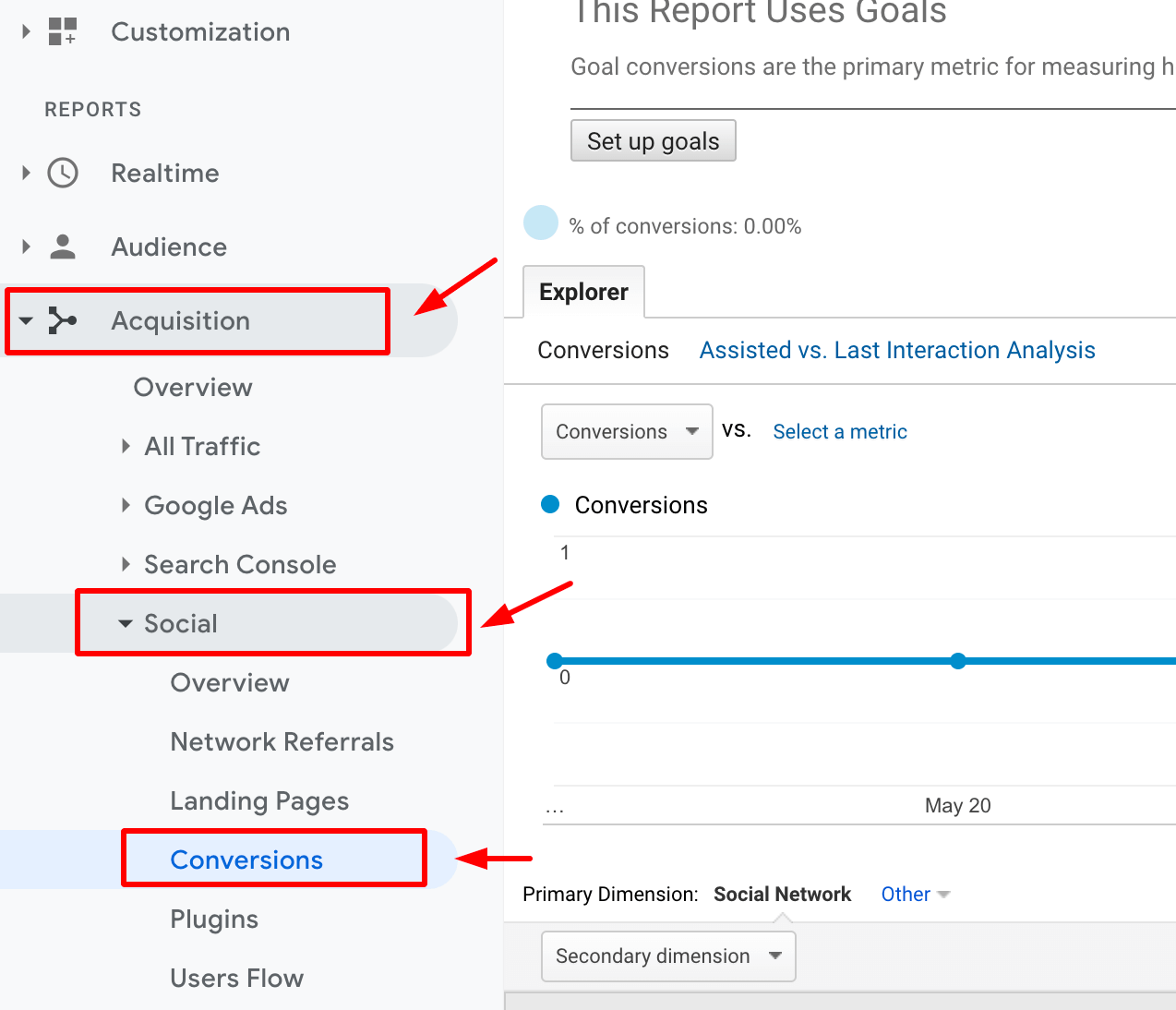
Bear in mind, this method depends on Google’s capability to identify the referral source, meaning it may not capture every visit originating from social media.
Finally, remember that the quality of traffic—such as visitor engagement level, duration of site visits, and conversion rate—is often more significant than the mere quantity of visitors. As such, it’s advisable to scrutinize these engagement metrics alongside the simple tally of visits.
Social Traffic Impact SEO
Social media platforms play an instrumental role in driving traffic to your website, but their impact extends beyond immediate visits. In this section, we’ll explore how social traffic can indirectly influence your site’s SEO performance, contributing to enhanced online visibility and ranking.
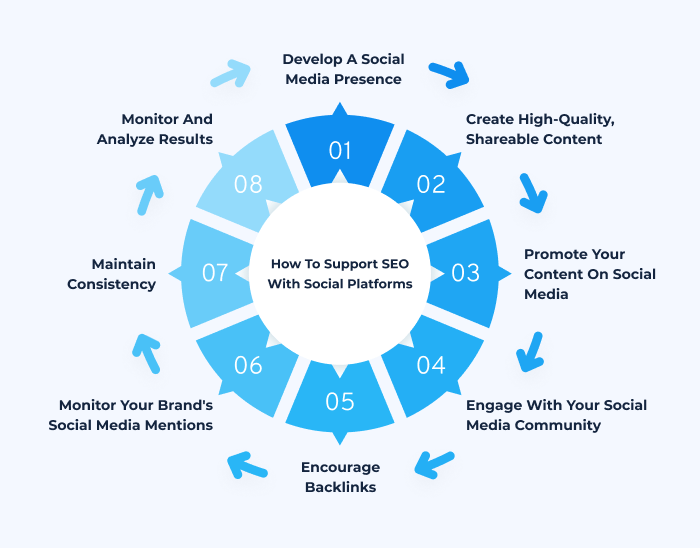
The web traffic originating from social media can indirectly contribute to your SEO in various ways:
- Increased visibility and traffic. The more people share your content on media platforms, the more visibility and traffic your site will likely get. This increase in traffic can indirectly influence your search engine ranking because more visitors often correlates with higher rankings, although it’s not a 1:1 correlation.
- Content distribution and promotion. Media platforms are excellent channels for content promotion, which can boost your content’s reach and visibility. If this leads to others linking to your content, it can help improve your site’s authority, which is a ranking factor in search engine algorithms.
- Brand awareness. Increased exposure on media channels can lead to greater brand recognition. If this leads to more searches for your brand on Google, it might signal to Google that your brand is popular and trustworthy.
- Longer lifespan of your posts. Posts on your website or blog might get buried under newer content over time, but media platforms can give your older content new life. This can generate more traffic over the long term for your site, which can indirectly benefit your SEO.
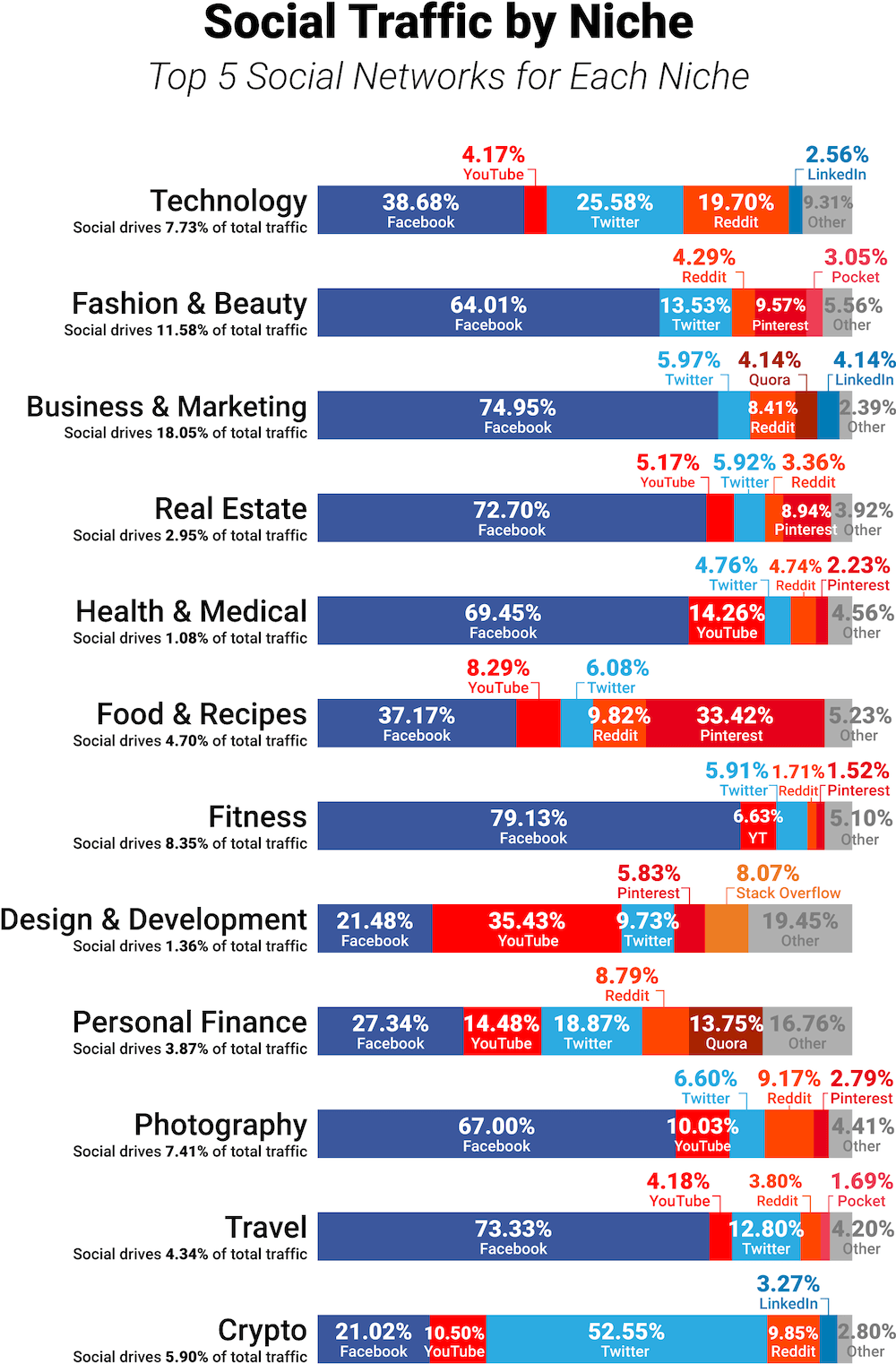
Remember, each search engine can handle traffic differently, and the algorithms are constantly updated, so it’s important to keep up with the latest best practices in SEO. As of now, focusing on creating high-quality, shareable content and fostering user engagement on social media can indirectly support your SEO strategy.
Common Challenges with Social Traffic and Practical Solutions for Website Owners or SEO Specialists
The following discussion outlines common issues encountered with social traffic and offers practical solutions. These insights, accompanied by real-life examples, aim to assist you in navigating the complex landscape of social media marketing, ultimately leading to a more robust and successful online presence.
Now, let’s delve into the challenges and their potential resolutions.
Low Engagement Rates
You notice that your website’s posts get a fair amount of clicks from your social media channels but very few likes, shares, or comments.
Solution: Revamp your content strategy. For example, if you run a tech blog, don’t just post links to your articles. Create engaging infographics that explain complex concepts, start discussions about controversial tech topics, or ask your audience to share their thoughts on the latest industry trends. Engaging content invites interaction and increases the chances of your posts being shared.
High Bounce Rate
Analytics reveal that many visitors from your media channels exit your website shortly after arriving without exploring other pages.
Solution: Consider the user experience on your landing pages. For instance, if you’ve been promoting a product on a media channel, ensure the landing page delivers the exact information presented in the promotional post. A quick-loading, mobile-friendly, easy-to-navigate website can also decrease your bounce rate.
Inconsistent Traffic
Your website experiences traffic spikes when you post viral content, but it doesn’t last or occur regularly.
Solution: Consistency is key in posting and engagement. Use analytics tools to find out the best times to post and the type of content your audience prefers. If you discover, for instance, that your audience loves short how-to videos, then regular production of such content can generate consistent traffic.
Difficulty Converting Social Traffic
Despite getting a decent amount of traffic, few visitors subscribe to your newsletter or make a purchase.
Solution: Make the next steps clear and enticing. For example, if you’re running an e-commerce store, consider offering a limited-time discount code to your audience. If you own a blog, provide a sneak peek of premium content available only to newsletter subscribers.
Over-reliance on One Platform
You get most of the traffic from one channel, which is risky if the platform’s popularity declines or the algorithm changes unfavorably.
Solution: Broaden your media portfolio. If your home decor website does well on Pinterest, consider leveraging Instagram’s visual appeal to reach a similar audience. Diversifying your presence can help maintain a steady flow of traffic even if one platform underperforms.
Remember, staying on top of trends, continually testing different strategies, and adapting based on data are vital for making the most of those visitors.
Sitechecker Social Media Checker Tool Asset for Tracking Your Website’s Social Signals
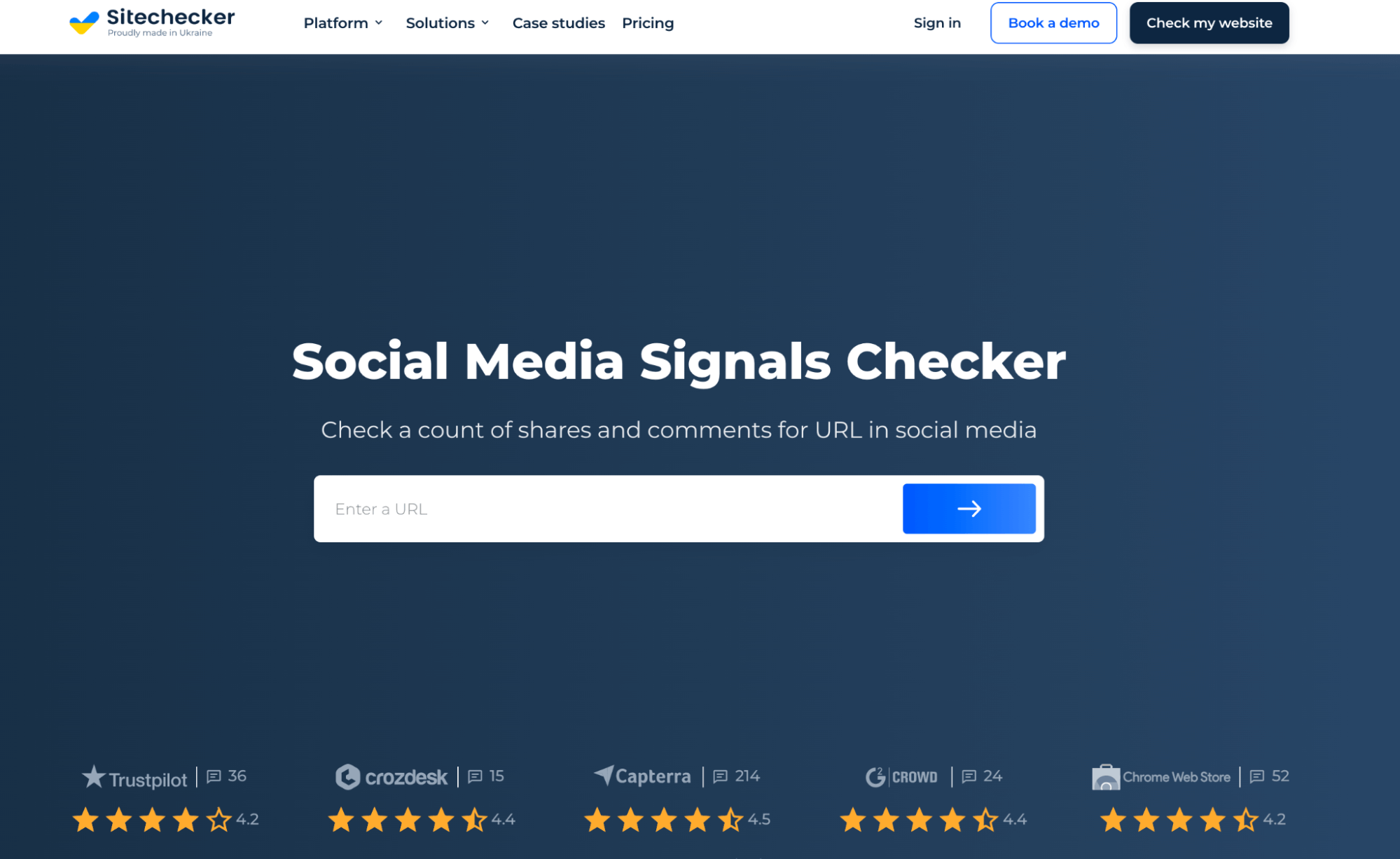
Sitechecker’s Social Media Checker tool tracks your website’s social signals, revealing how your content performs across platforms like Facebook, Twitter, LinkedIn, and Pinterest.
For a given URL, the higher the computed social media interaction, the better the media authority score.
Social media checker can be used to see how popular certain URLs are on different networks. The software delivers data analysis on media authority and engagement for each web page uploaded.
You can use this tool to get a complete overview of what people are saying about your brand or business online.
The service allows you to see your social account activity. For example, who has shared your post on various platforms.
However, remember to consider metrics like traffic, conversions, and site engagement for a holistic performance view.
Conclusion
Social traffic, originating from social media, is a vital element of a successful online strategy. Tools like Google Analytics can track traffic, offering insights into user behavior and engagement. Importantly, such traffic can indirectly boost SEO by enhancing visibility, promoting content, and increasing brand recognition.
However, leveraging it can present challenges, such as low engagement rates, high bounce rates, inconsistent traffic, conversion difficulties, and reliance on one platform.
Addressing these issues necessitates strategic content creation, user experience optimization, consistent posting, clear conversion pathways, and social media diversification. Mastering social traffic management involves constant learning, strategic testing, and adaptable strategies, ensuring a successful online presence.
